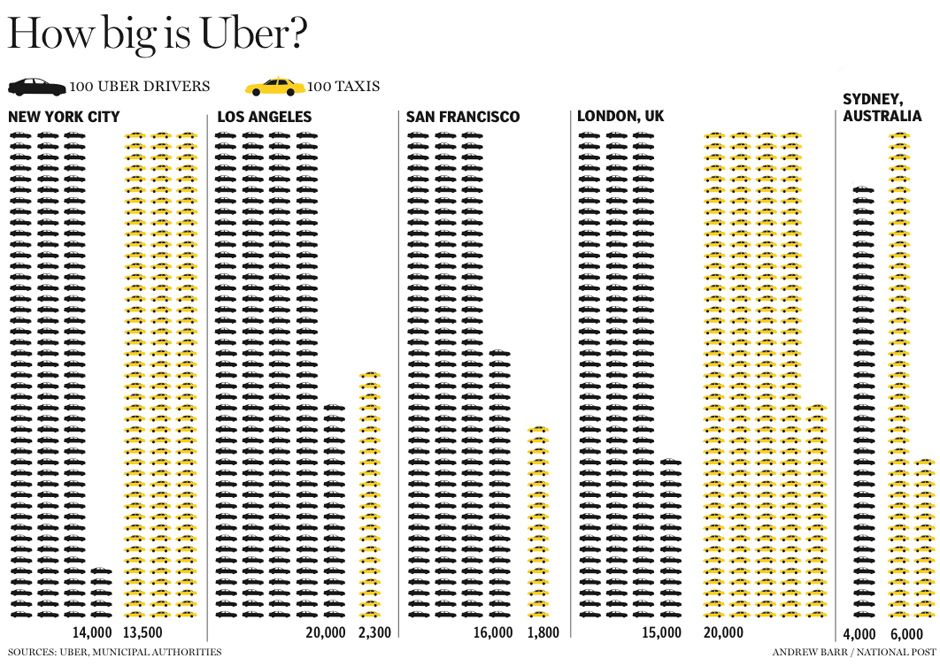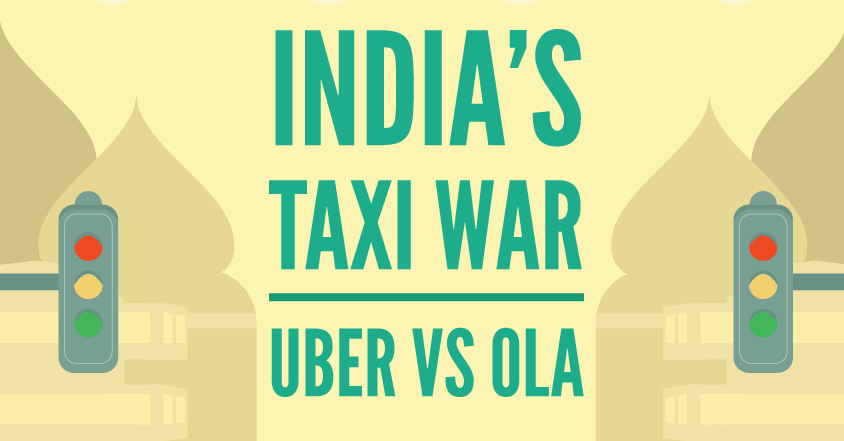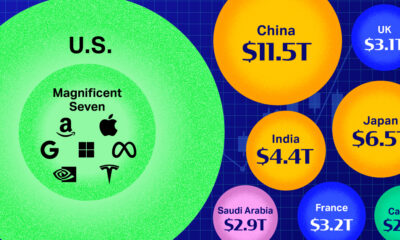Technology
India’s Taxi War: Uber vs. Ola

India’s Taxi War: Uber vs. Ola
In the cities where Uber is permitted by municipalities to operate, the ensuing battle is typically between the massive tech giant and the local taxi companies. However, in India the competitive landscape is much different: a domestic tech company has an early head start with a soaring market share. In this case, for Uber, the stakes couldn’t be much higher.
India is the second most populous country in the world, but it is expected to surpass China as early as 2022 in this category. More importantly, the country will surely be an economic powerhouse and a center of global growth in the foreseeable future. India does have its challenges, but in a previous chart we showed that it will rival China for overall economic growth in the coming decades.
So who is bold enough to challenge Uber for the massive Indian rideshare market?
That company is Ola Cabs and so far it has raised five rounds of funding, with the most recent being for a hefty $210 million in October 2014. The company was founded in 2010 by Bhavish Aggarwal and provides 750,000 daily rides in the Indian market. Ola also recently acquired a major domestic competitor (TaxiForSure) for a sum of $200 million in cash and stock.
So far, Uber has committed $1 billion from investors to ensure its dominance in India, but currently the company only brings in about 200,000 daily rides. Uber has six years of experience of winning these types of battles: against Lyft, against local taxi companies, in courts, and in the public relations sphere.
India’s size and fragmented transit system also means that there could be room for two or more rideshare companies to co-exist in the future. Since ridesharing is still in its infancy in the market, there is plenty of room to still grow for both companies: but the battle could be heated.
Lastly, for fun: here’s a graphic comparing Uber’s size in major markets against the legions of all taxi companies operating:

Original graphic by: Tech in Asia
Brands
How Tech Logos Have Evolved Over Time
From complete overhauls to more subtle tweaks, these tech logos have had quite a journey. Featuring: Google, Apple, and more.

How Tech Logos Have Evolved Over Time
This was originally posted on our Voronoi app. Download the app for free on iOS or Android and discover incredible data-driven charts from a variety of trusted sources.
One would be hard-pressed to find a company that has never changed its logo. Granted, some brands—like Rolex, IBM, and Coca-Cola—tend to just have more minimalistic updates. But other companies undergo an entire identity change, thus necessitating a full overhaul.
In this graphic, we visualized the evolution of prominent tech companies’ logos over time. All of these brands ranked highly in a Q1 2024 YouGov study of America’s most famous tech brands. The logo changes are sourced from 1000logos.net.
How Many Times Has Google Changed Its Logo?
Google and Facebook share a 98% fame rating according to YouGov. But while Facebook’s rise was captured in The Social Network (2010), Google’s history tends to be a little less lionized in popular culture.
For example, Google was initially called “Backrub” because it analyzed “back links” to understand how important a website was. Since its founding, Google has undergone eight logo changes, finally settling on its current one in 2015.
| Company | Number of Logo Changes |
|---|---|
| 8 | |
| HP | 8 |
| Amazon | 6 |
| Microsoft | 6 |
| Samsung | 6 |
| Apple | 5* |
Note: *Includes color changes. Source: 1000Logos.net
Another fun origin story is Microsoft, which started off as Traf-O-Data, a traffic counter reading company that generated reports for traffic engineers. By 1975, the company was renamed. But it wasn’t until 2012 that Microsoft put the iconic Windows logo—still the most popular desktop operating system—alongside its name.
And then there’s Samsung, which started as a grocery trading store in 1938. Its pivot to electronics started in the 1970s with black and white television sets. For 55 years, the company kept some form of stars from its first logo, until 1993, when the iconic encircled blue Samsung logo debuted.
Finally, Apple’s first logo in 1976 featured Isaac Newton reading under a tree—moments before an apple fell on his head. Two years later, the iconic bitten apple logo would be designed at Steve Jobs’ behest, and it would take another two decades for it to go monochrome.
-

 Green1 week ago
Green1 week agoRanked: The Countries With the Most Air Pollution in 2023
-

 AI2 weeks ago
AI2 weeks agoThe Stock Performance of U.S. Chipmakers So Far in 2024
-

 Markets2 weeks ago
Markets2 weeks agoCharted: Big Four Market Share by S&P 500 Audits
-

 Real Estate2 weeks ago
Real Estate2 weeks agoRanked: The Most Valuable Housing Markets in America
-

 Money2 weeks ago
Money2 weeks agoWhich States Have the Highest Minimum Wage in America?
-

 AI2 weeks ago
AI2 weeks agoRanked: Semiconductor Companies by Industry Revenue Share
-

 Travel2 weeks ago
Travel2 weeks agoRanked: The World’s Top Flight Routes, by Revenue
-

 Countries2 weeks ago
Countries2 weeks agoPopulation Projections: The World’s 6 Largest Countries in 2075















